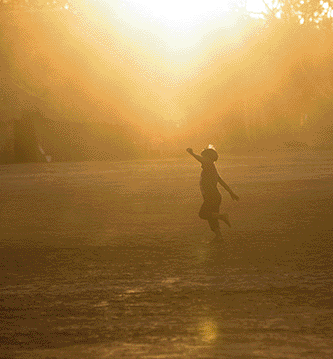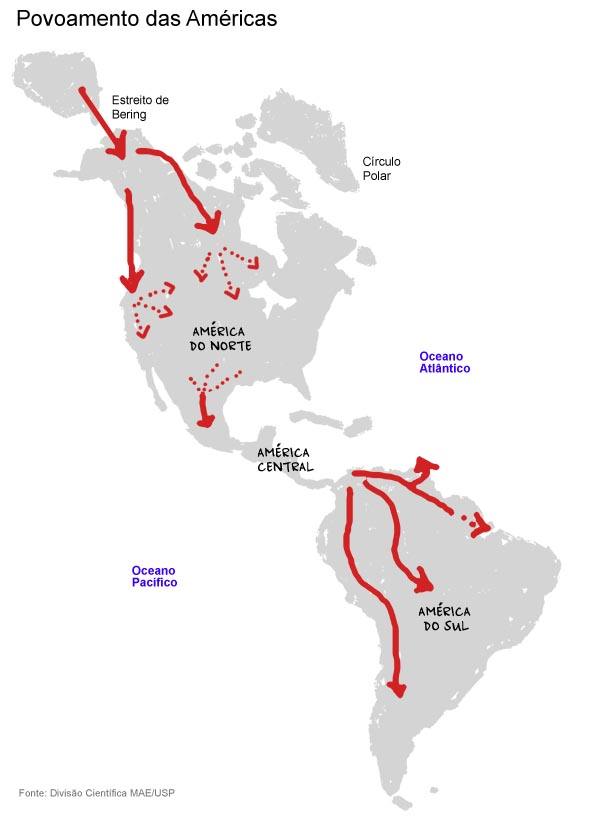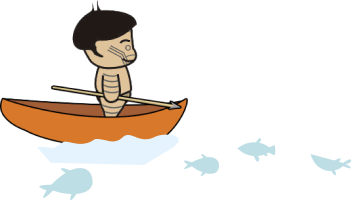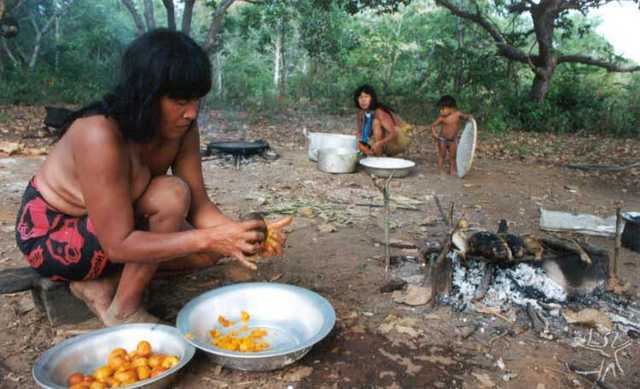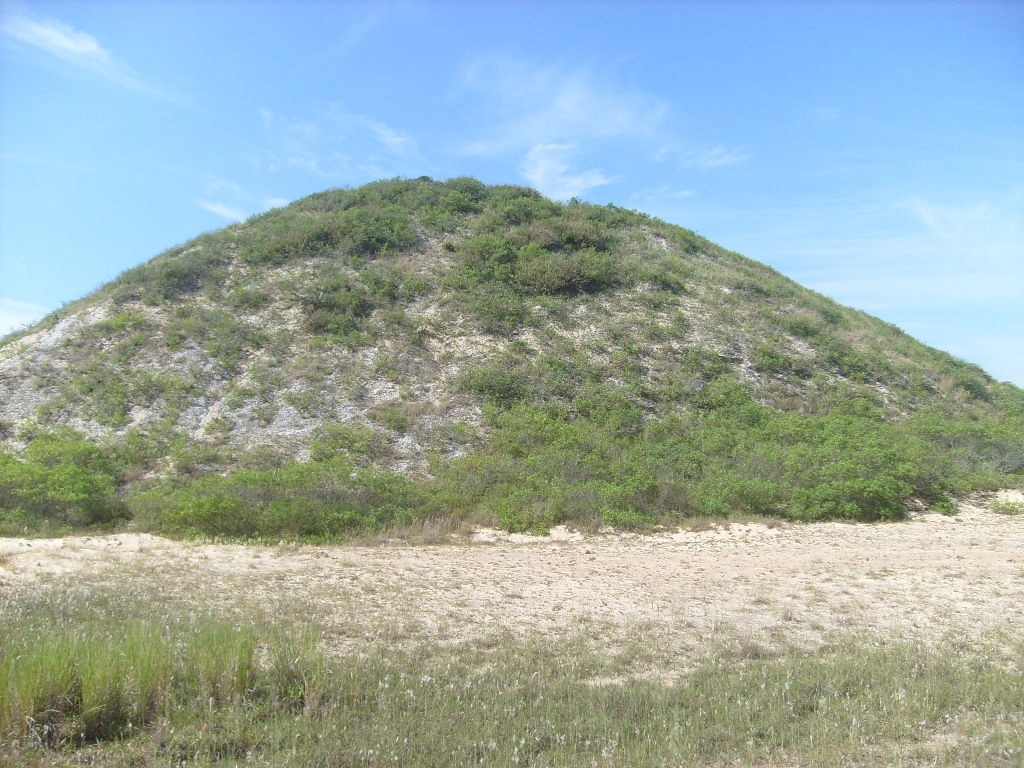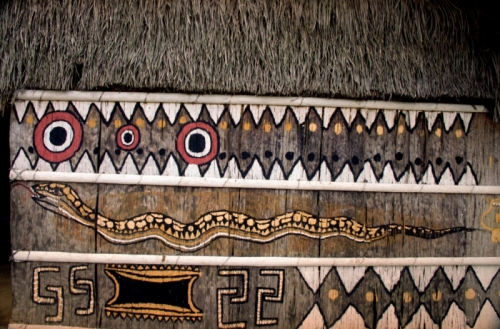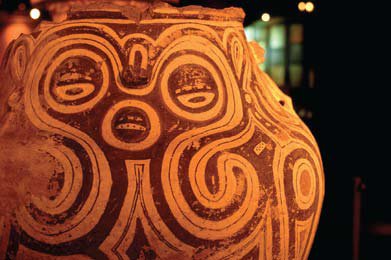Some people think that all the indigenous people in Brazil speak Tupi.
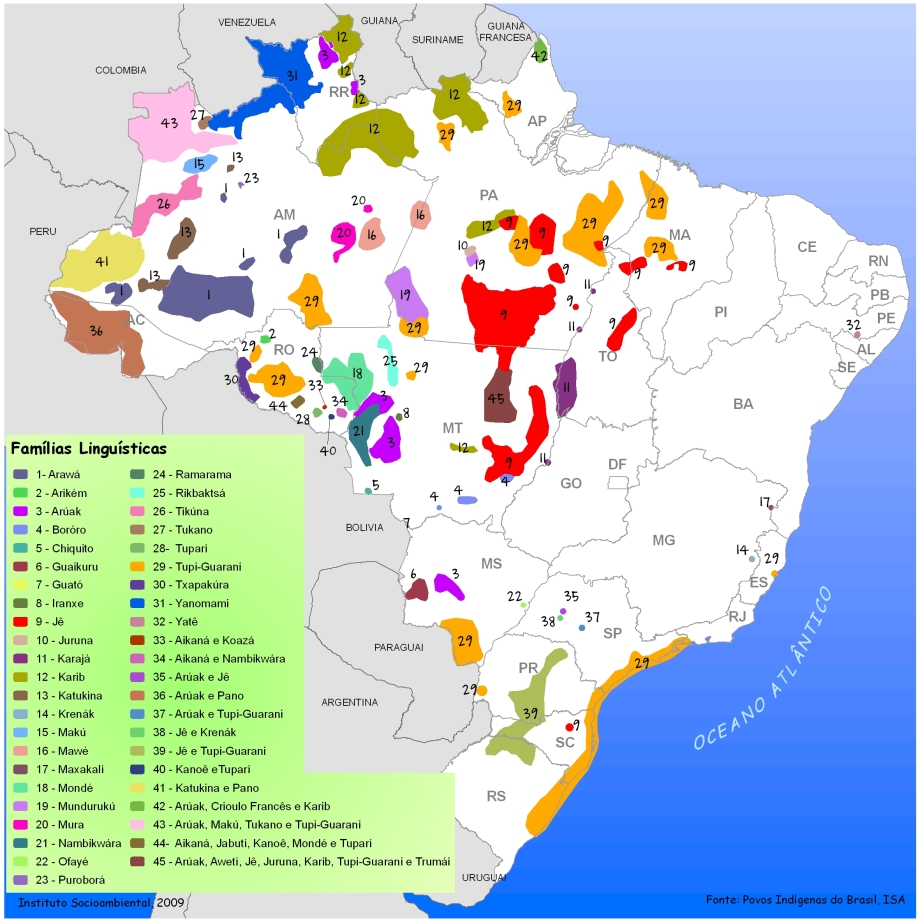
This is not true. Tupi is not even a language in itself. It is a linguistic family. The confusion is partly caused by the fact that many words in Brazilian Portuguese come from languages of the Tupi-Guarani linguistic branch.
There are actually more that 180 different indigenous languages and dialects spoken in Brazil!
Did you know it was that many?
Are indigenous languages all alike? And do they have similar origins?
- Some indigenous languages are alike, but not all. When languages are alike, it means that they started off as one original language, but have changed over the years. This process is called diversification.
How do you work out the differences between languages?
People who study languages are called linguists. They look at the similarities and the differences between languages, and work out where they belong on linguistic family trees. Different languages belong on different branches of these family trees.
Different languages develop within the same linguistic family. Their origin was another, older language that is no longer spoken. Because this original language existed thousands of years ago, the similarities between all the languages that grew out of it can be difficult to see.
A linguistic branch is a group of languages which have become different from each other more recently. Portuguese is an example of this.

Portuguese belongs on the Latin branch of the Indo-European linguistic family tree.
Do you think Portuguese is more similar to French and Spanish, or to Russian, Welsh or German?
The correct answer is French and Spanish. They are from the same branch of the same linguistic family tree! That does not mean that anyone who speaks Portuguese can understand, or speak, French, or vice-versa. But the two languages have many things in common. They would have been very similar when their diversification started. If you compare Portuguese and Russian, however, you will find few similarities. In fact, there are very big differences between the two languages! This is because, although they are both on the same linguistic family tree, they are from different branches of it. Portuguese belongs to the Latin branch. Russian belongs to the Slavic branch.
Indigenous languages can be looked at in exactly the same way!
There are languages from the same linguistic branch and this means they are similar in many ways. There are languages from different linguistic branches and this means they are not at all similar.
There are also languages which belong to different linguistic family trees. This makes the differences greater still.There are also languages which belong to different linguistic family trees. This makes the differences greater still.
Find out the linguistic family trees of indigenous languages in Brazil.
In Brazil, there are two big linguistic family trees. One is called Macro-Jê. The other is called Tupi.
The Tupi family tree has 10 different linguistic branches. The Macro-Jê family tree has 9 different branches.
There are another 20 linguistic branches which show so few similarities that they cannot be grouped together on linguistic family trees.
To find out what a linguistic branch and a linguistic family tree are, see the previous question.


Find out how to say some words in some languages from the Tupi-Guarani linguistic branch.
Below you will see how words like stone, fire, alligator, bird and jaguar are said in different languages from the Tupi-Guarani linguistic branch!!
You will notice some similarities and some differences between the words!
Tupi-Guarani branch (Tupi linguistic family tree)
Words Language Guarani Mbyá Language Tapirapé Language Parintintin Language Wajãpi Amazonian General Language
stone itá itã itá takúru itá fire tatá tãtã tatá táta tatá alligator djakaré txãkãré djakaré iakáre iakaré bird gwyrá wyrã gwyrá wýra wirá jaguar djagwareté txãwãrã dja´gwára iáwa iawareté< Fonte: Povos Indígenas no Brasil do Instituto SocioambientalPhrases and words from the Tuyuka language
The Tuyuka live to the north of the Amazon region, near to the River Negro and the River Uaupés.
Tuyuka children speak at least two languages. Their fathers speak the Tuyuka language. Their mothers usually speak the Tukano language.Tuyuka children speak at least two languages. Their fathers speak the Tuyuka language. Their mothers usually speak the Tukano language.
Have you ever heard Tuyuka being spoken?
Have a look at this video!
Find out about words from indigenous languages which have become part of everyday speech in Brazil
Many words commonly used in Brazil, come from languages from the Tupi-Guarani linguistic branch. (These include the languages spoken by the Tupinambá and Tupiniquim Indians). Words from these languages used by Brazilians include the names of objects, places, animals and types of food.
Have a look below. This is a list of words from the Tupinambá language which are now part of the vocabulary of Brazilians!
Words from the Tupinambá language Aratuípe "on the river of crabs" Comandatuba "lots of bean plants" Jacareí "the rivers where alligators are found" Jundiaí "the river of catfish" Pavuna "dark lake" Paraíba "bad river" Sergipe "on the river of siri crabs" Una "black river" Araraquara "anthills of arará" Boracéia "dance" Butantã "hard ground" Caraguatatuba "where lots of bromelias grow" Itaim "small stones" Ipiranga "red river" Itaquaquecetuba "where lots of taquara-faca grass grows" Jabaquara "where runaways hide" Jaguariúna "black river of the jaguars" Moji-Mirim "small river of the snakes" Piracicaba "where fish arrive" Paranapiacaba "where you can see the sea" Ubatuba "where there are lots of canes for making arrows" Words from the Tupinambá language for animals and plants Birds Jacu, urubu, seriema Insects saúva, pium Fishes baiacu, traira, piaba, parati, lambari, piranha Reptiles jararaca, sucuri, jabuti, jacaré, jibóia Other Animals Tamanduá, capivara, jacaré, sagüi, jabuti, quati, paca, cutia, siri, tatu, arara Fruits abacaxi, cajá, mangaba, jenipapo, maracujá Trees copaíba, embaúba, jacarandá, jatobá Fonte: Museu da Língua PortuguesaDo some indigenous peoples speak more than one language?
Yes. Many indigenous people speak, or understand, more than one language. In some communities most people speak more than one language. This is called multilingualism.
Sometimes, in the same indigenous village, you will come across people who only speak an indigenous language. Others only speak Portuguese. And others are multilingual. The fact that they speak different languages does not normally stop indigenous peoples from interrelating, marrying among themselves, exchanging goods, holding festivals or studying together.
A good example of this would be the indigenous peoples who speak languages from the Tukano linguistic branch. These people mostly live along the River Uaupés, on the frontier between Brazil and Columbia. Many of them speak between three and five languages. Some speak more!
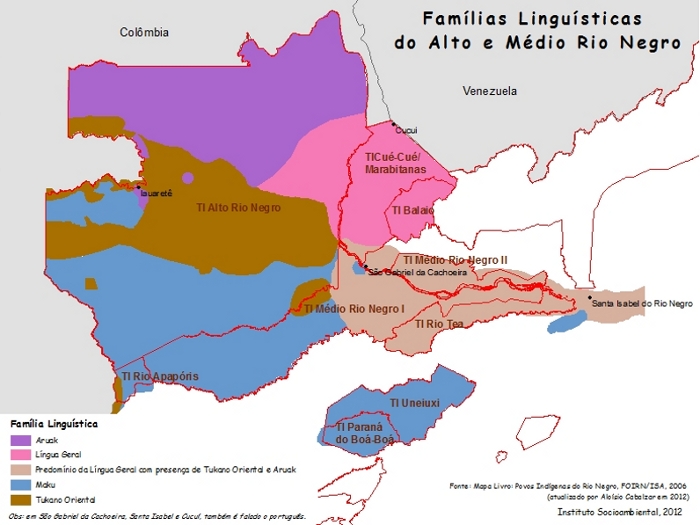
Source: Book Povos Indígenas do Rio Negro. FOIRN/ISA, 2006. Atualizado 2012. The multilingual Indians of River Uaupés region do not just know languages from the Tukano linguistic branch. Among them are people who speak languages from the Aruak and Maku linguistic branches and also Amazonian General Language (sometimes known as Nheengatu), Portuguese and Spanish.
Is there one main language which helps people from different indigenous groups communicate?
Sometimes one language becomes the common form of communication. Specialists call this a ‘lingua-franca’.
For example, the Tukano language, which is from the Tukano linguistic branch, plays a special social role among people who speak other languages from the same branch. This is because it has become the lingua-franca of the region.
Sometimes Portuguese serves as the lingua-franca.
In some regions of the Amazon, people from different indigenous groups and riverside settlements use Nheengatu (or Amazonian General Language) to communicate with each other.
How did Amazonian General Language come to exist?
Amazonian General Language developed in the seventeenth and eighteenth centuries, in the Brazilian states of Maranhão and Pará. It grew out of the Tupinambá language, which was spoken right along the Brazilian coastline.
Little by little this language became so common that by the start of the eighteenth century it spread along with the Portuguese colonial expansion into the Amazon. This way it started to be used all along the Amazon River valley and up its tributaries. Use of Amazonian General Language even spread up the River Negro into regions of Venezuela and Colombia.
Most of the colonizers and missionaries of the period learnt this language. And it was taught to indigenous peoples in their villages. From the end of the nineteenth century, Amazonian General Language became known as Nheengatu (which means ‘good language’).
Nheengatu has undergone many changes but it is still spoken today, especially in the River Negro region. As well as being the mother tongue of many people living in riverside settlements, it serves as a way for Indians and non-Indians to communicate. It also offers a way for Indians from different indigenous groups to talk to each other.
Did you know that there is another ‘general language’?

Source: Museu da Língua Portuguesa. The Paulista General Language grew out of the language of the Tupiniquim Indians from São Vicente and the Piratininga plain (in what is now the Brazilian state of São Paulo). This language was a bit different to the Tupinambá language. In the seventeenth century it was spoken by the explorers who crossed Brazil (known as bandeirantes). Through them, this Paulista General Language spread to the states of São Paulo, Minas Gerais, Mato Grosso, the south of the state of Goiás, and the north of the state of Paraná.
Are there Indians in Brazil who no longer speak their native language?
Yes. The great majority of indigenous peoples in the north east of Brazil no longer speak their native language.
Why?
The north east of Brazil was the first region of the country to be colonized. These days it is the region with the lowest indigenous population and where the fewest native languages are spoke. This is precisely because it was the region where the first missionary compounds were built.
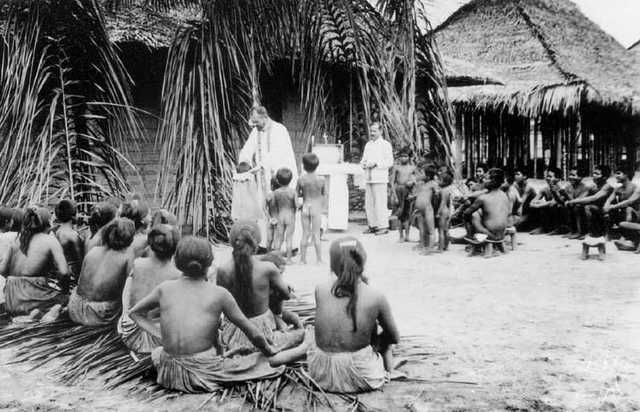
Photo: Arquivo da Diocese de S. Gabriel da Cachoeira. These compounds were the places where missionaries gave Indians religious education. People from different indigenous groups were forced to live together in them. This meant that they gave up their traditional lands, their cultural traditions and their languages. The missionaries tried everything they could to convert indigenous people to the Roman Catholic faith, and to the way-of-life of the colonizers.
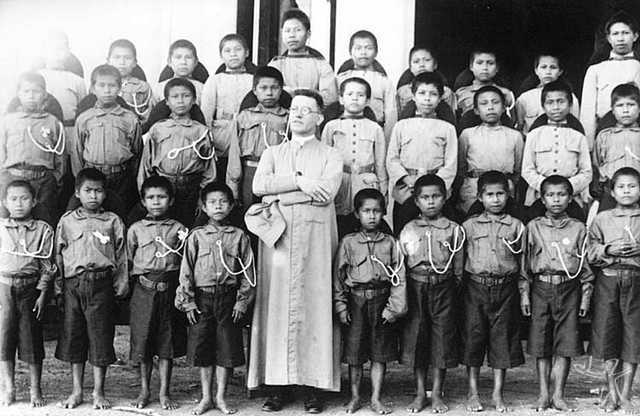
Photo: Arquivo da Diocese de S. Gabriel da Cachoeira. 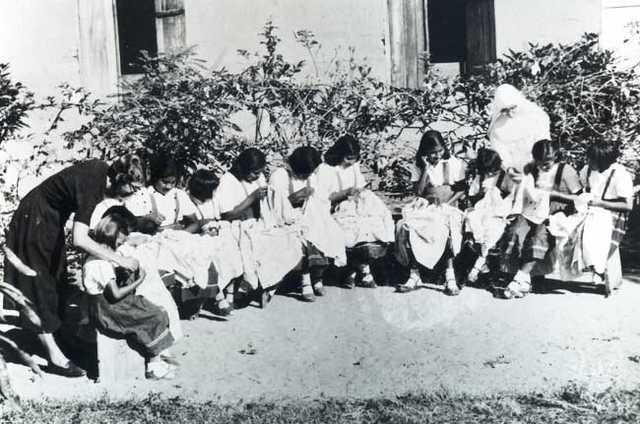
Photo: Arquivo OPAN It was a long and violent period, in which many indigenous peoples were enslaved and abused. They suffered from hunger, illnesses passed on by non-Indians, from discrimination and from prejudice. Many of their cultural traditions were forbidden. If not, they were persecuted for maintaining them. Because of the fierce pressure on their ways of life, many indigenous peoples were wiped out. Others lost interest in their traditions and their native languages.
Why is a diversity of languages important for the world?
Because each language holds the unique knowledge and wisdom of the people who speak it. The loss of a language is, in the end, a loss for all of humanity.
Sources of information
- Aryon Dall´Igna Rodrigues
Línguas Brasileiras – para o conhecimento das línguas indígenas (1986)
- UNESCO
Vitalidade da língua e línguas em perigo de extinção (2003)


 Portugues
Portugues
 German
German
 Spanish
Spanish
 Norwegian Bokmål
Norwegian Bokmål

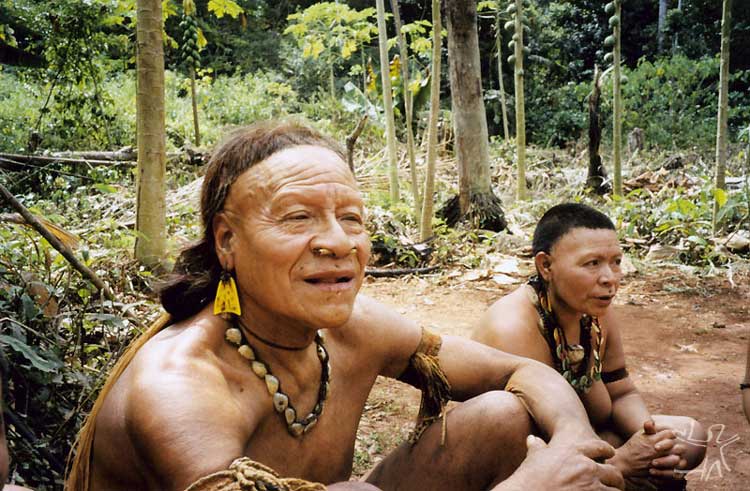 Languages
Languages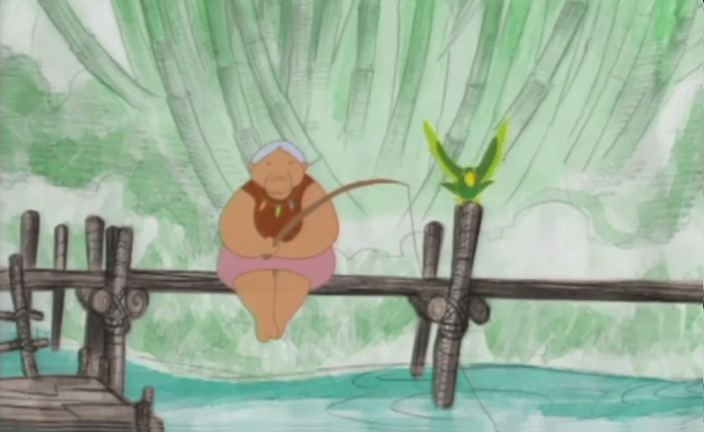 Ilya e o fogo
Ilya e o fogo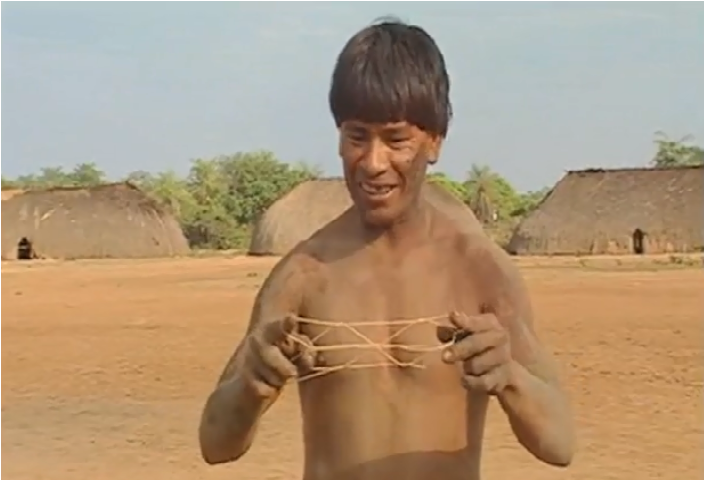 String figures: Ketinho Mitselü
String figures: Ketinho Mitselü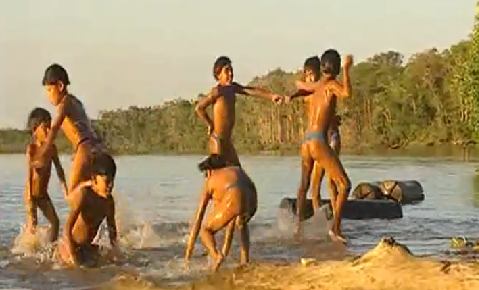 Toys and games of the Kalapalo: Ikidene
Toys and games of the Kalapalo: Ikidene